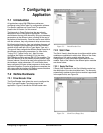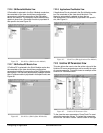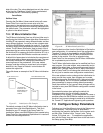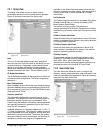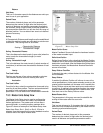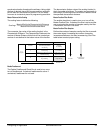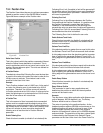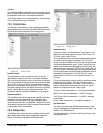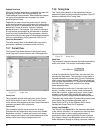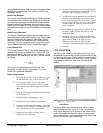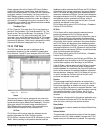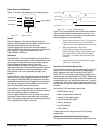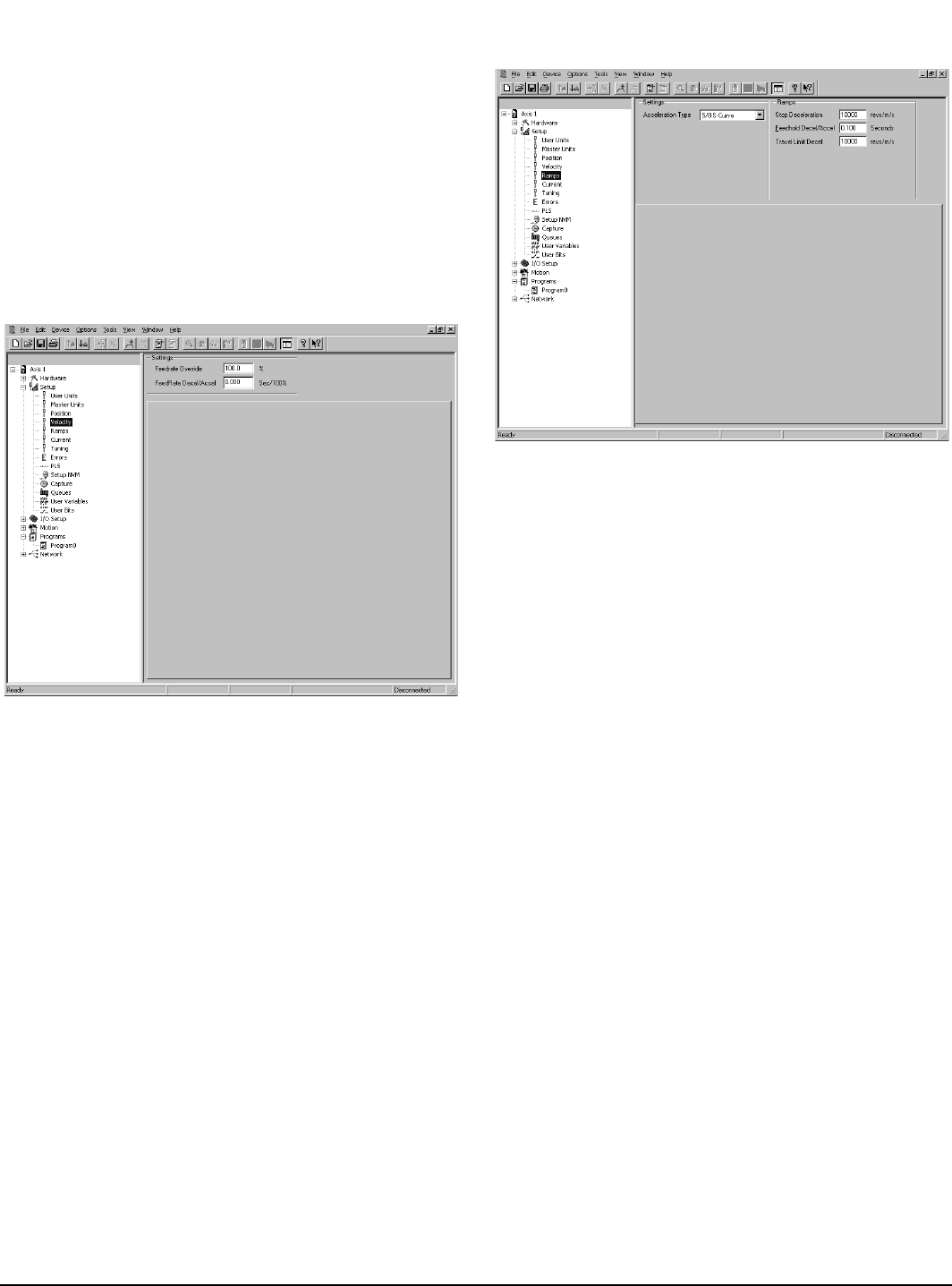
Configuring an Application www.emersonct.com 41
software.
If an absolute index is used with a non-zero rotary rollover
point, the SM-EZMotion will calculate the shortest path to
its destination and move in the required direction.
To force the motor to run a certain direction, use the Rotary
Plus or Rotary Minus type of indexes.
7.3.5 Velocity View
The Velocity View allows the user to define parameters
related to the velocity control of the SM-EZ Motion module.
Figure 69 shows an example of the Velocity view.
Figure 69: Velocity View
Feedrate Override
This parameter is used to scale all motion. It can be
described as scaling in real time. The default setting of
100% will allow all motion to occur in real time. A setting of
50% will scale time so that all moves run half as fast as they
do at 100%. A setting of 200% will scale time so that all
moves run twice as fast as they would at 100%. FeedRate
Override is always active and affects all motion, including
accels, decels, dwells, and synchronized motion. This
parameter may be modified via Modbus or in a program.
Feedrate Accel/Decel
The FeedRate Decel/Accel parameter specifies the ramp
used when velocity changes due to a change in the
FeedRate Override value. The units of feedrate decel/
accel are Seconds/100% of FeedRate. Therefore, the user
must specify the amount of time (in seconds) to accelerate
or decelerate 100% of FeedRate.
7.3.6 Ramps View
The Ramps View allows the user to define various accel/
decel ramps used under typical application conditions.
Figure 70 shows an example of the Ramps view.
Figure 70: Ramps View
Acceleration Type
Press the arrow by the Acceleration Type list box. It will
display the various acceleration types: 5/8 S-Curve, 1/4
S-Curve, Linear, and S-Curve.
This is used to select the acceleration/deceleration type for
all motion (homes, jogs and indexes). The “S-Curve”
ramps offer the smoothest motion, but lead to higher peak
acceleration/deceleration rates. “Linear” ramps have the
lowest peak acceleration/deceleration rates but they are
the least smooth ramp type. “5/8 S-Curve” ramps and “1/4
S-Curve” ramps use smoothing at the beginning and end
of the ramp but have constant (linear) acceleration rates in
the middle of their profiles. The “5/8 S-Curve” is less
smooth than the “S-Curve” but smoother than the “1/4
S-Curve”.
S-Curve accelerations are very useful on machines where
product slip is a problem. They are also useful when
smooth machine operation is critical. Linear ramps are
useful in applications where low peak torque is critical.
Below is a comparison of the 4 ramp types:
S-Curve: Peak Acceleration = 2 x Average Acceleration
5/8 S-Curve: Peak Acceleration = 1.4545 x Average
1/4 S-Curve: Peak Acceleration = 1.142857 x Average
Acceleration
Linear: Peak Acceleration = Average Acceleration
Stop Deceleration
The value you enter here defines the deceleration rate
which is used when the Stop destination is activated. The
default is 100 RPM/second.
The Stop destination is found in the Ramps Group in the
Assignments view.



